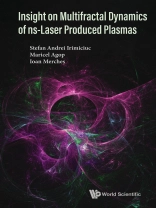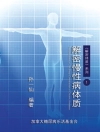Fourteen years after the first proposal of a fractal theoretical model to understand the dynamics of laser produced plasma, a complete image of the model is projected on a wide range of empirical data related to laser produced plasmas.
The book tackles the two sides of laser produced plasmas with experimental data on a wide range of materials, from metallic alloys to geological samples and the associated mathematical model is developed in the multifractal theory of motion. A new perspective is explored in analyzing and interpreting the data collected by electrical or optical methods, focusing especially on the charged particles dynamics and the nature of fractal fluctuations and their influence during measurements as well as to the scattering process and plasma splitting phenomena, all seen through the lens of multifractal physics.
The book offers the best presentation of the multifractal theoretical model for the study of transient phenomena in laser produced plasmas, which focus leads to a balanced development of the model showcasing both the flexibility and the unique vision of a multifractal mathematical apparatus.
Contents:
- Laser Ablation: The Answer in Search of a Question
- Diagnostics Tools for Transient Plasmas Generated by Laser Ablation
- Toward a Theory of Motion in a Multifractal Paradigm
- Charged Particle Dynamics in Laser-Produced Plasmas
- Dynamics of Transient Plasmas Generated by Nanosecond Laser Ablation of Metallic Alloys
- Investigations on the Laser Ablation Process on Geomaterials
- Conclusions and Perspectives
- Index
Readership: Graduate students and research professionals interested in laser-based technologies and the field.
Key Features:
- Expands the understanding of charge particle dynamics during pulsed laser deposition process and LIBS analysis, through the multifractal theoretical model implemented for laser produced plasma dynamics
- An in-depth analysis on laser produced plasma diagnostics which will be essential for students, researchers at the start of their research in the realm of laser-based technologies
- Full perspective over the particle kinetics during expansion highlighting the complexity of the laser produced plasmas
- Robustness of the approach with both elementary aspects and application driven data












